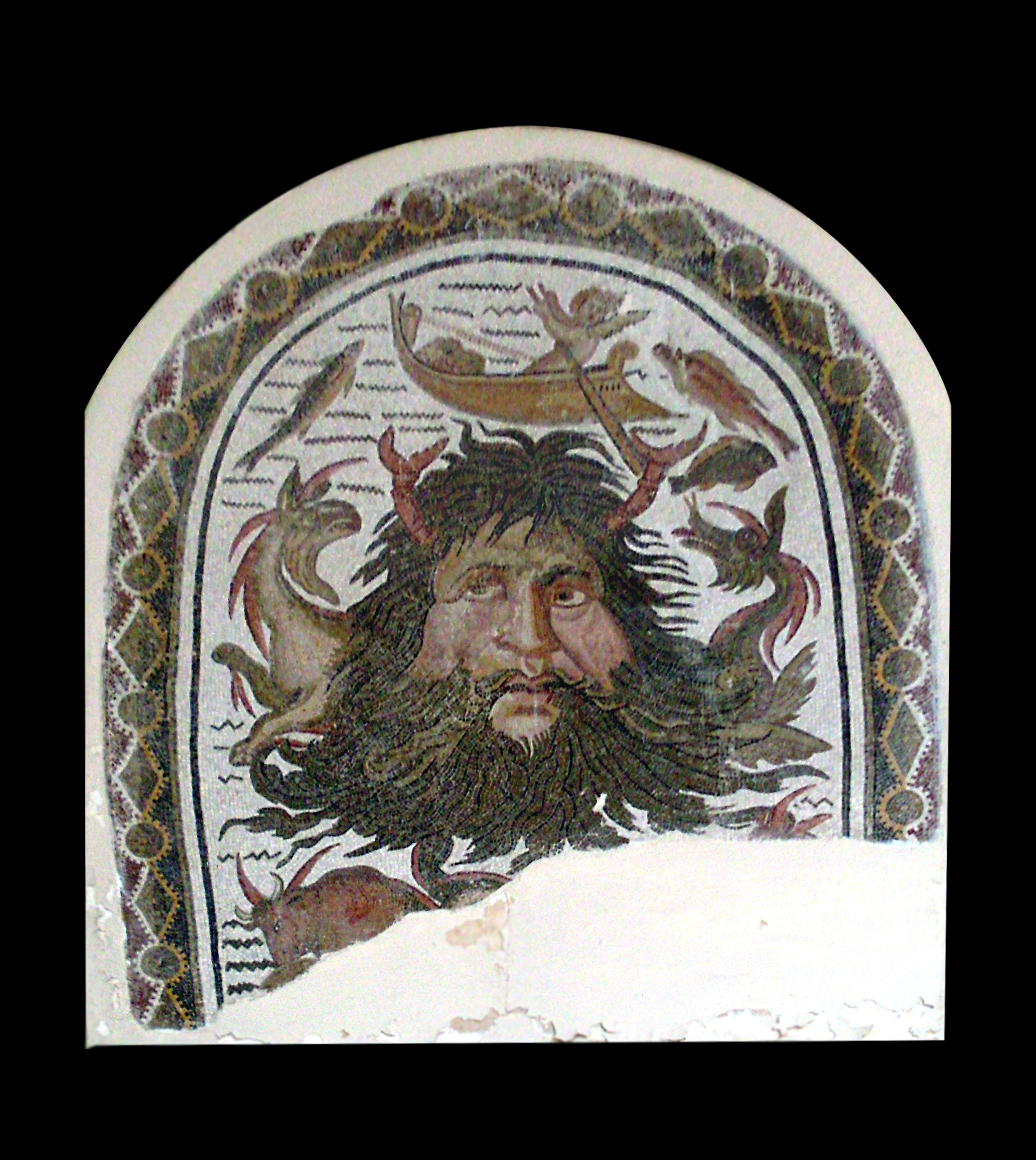Oceanus, Ὠκεανός: God of the Oceans
Detail from a huge mosaic depicting the god Oceanus as a young man not an old as usual.
Themetra baths, (Chott Meriem), Sousse governorate.
Mosaic (Stone and glass paste).
Roman epoch.
Sousse Archaeological Museum, Sousse, Tunisia.
Photo by: Raafat Reda Ahmed
* Oceanus : Greek, The Titan son of Gaia and Uranus and the brother and husband of the Titan Tethys; father of all the Oceanids and all the rivers and seas of the world. Like many ancient peoples, the Greeks believed that water encircled the world. They called this water Oceanus. Oceanus was represented sometimes as a serpent encircling the Earth, its tail in its mouth, or as an old man with a long beard and with a Bull’s horns upon his head. With the ascendancy of worship of the Olympian Gods, Poseidon became the lord of the seas and rivers while Oceanus retired into oblivion, though his name was still used to denote the vast waters that stretched beyond the known world of the ancients.
Source:
- Kathline N. Daly, Greek and Roman Mythology A to Z, third edition, p. 103.
- Ὠκεανός. Liddell, Henry George; Scott, Robert; A Greek–English Lexicon at the Perseus Project.
* Ps: Many Mosaic works from the Roman epoch which depict Oceanus was found in Tunisia, and these masterpieces home now in many Tunisian museum, such as in Bardo National Museum, the Archaeological Museum of Sousse and many others, we can also we also can relish the beauty of them in many ancient ruins around Tunisia.
Detail from an apse-shaped basin mosaic depicting the god Oceanus surrounded by a variety of fishes and molluscs.
Roman villa, Hadrumetum (Actual Sousse).
Mosaic (Stone and glass paste).
Roman epoch, Middle of the second century CE.
Sousse Archaeological Museum, Sousse, Tunisia.
Photo by: Raafat Reda Ahmed
Oceanus stares out of a Bardo Museum mosaic, Tunisia.
Photo by: Gareth Harney
Oceanus.
From Acchola, Sfax governorate.
at Bardo National Museum, Tunisia.
Photo by: M. Rais, Wikipedia.
Head of Oceanus, Triumph of Neptune and Amphitrite, mosaic from Utica, Tunisia. Roman civilisation, 3rd-4th century AD.
Bardo National Museum, Tunis, Tunisia.
Photo by DeAgostini/Getty Images)
Mosaic of Oceanus and Thetis, Hatay Archaeology Museum, Antioch, Hatay province, Southwest Turkey.
Source: Alamy Stock Photo






Comments
Post a Comment